You'll find these 7 fire-free survival soups perfect for off-grid living using solar cooking methods: Solar Bean Power Soup packs 15g of protein per serving, while Rice and Lentil Sunshine delivers essential fiber with pre-soaked ingredients. Three Bean Solar Stew combines black, pinto, and garbanzo beans for hearty nutrition, and Rainbow Legume Energy Bowl offers colorful variety. Mediterranean Chickpea Solar Soup features aromatic spices, Sunbaked Rice and Beans provides 2,000 daily calories, and High Protein Solar Bowl delivers up to 32g of protein. Each recipe relies on simple ingredients and solar cooking techniques that'll transform your off-grid meal preparation. Let's explore how to create these energy-sustaining soups step by step.
Solar Bean Power Soup
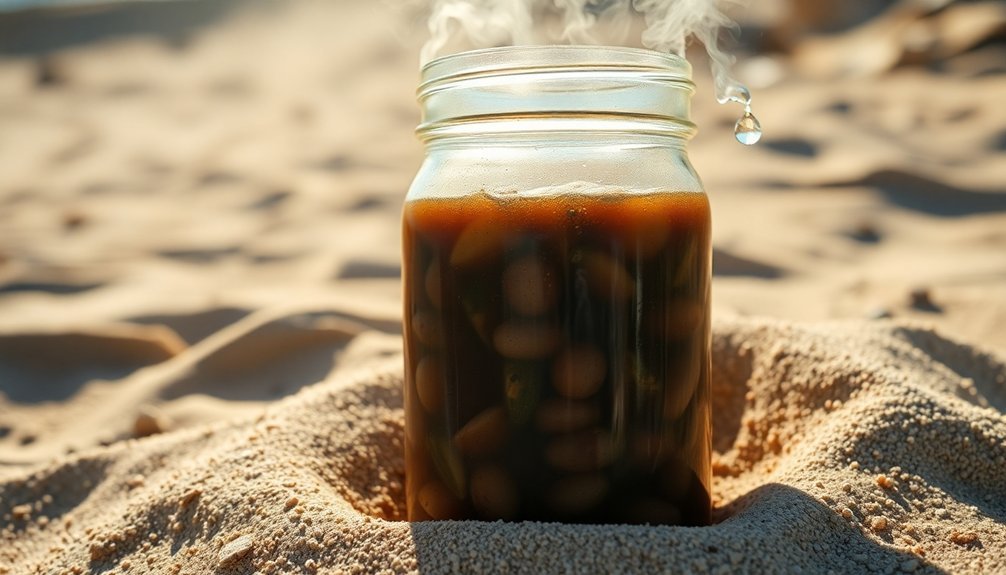
A hearty black bean soup cooked entirely with solar power makes the perfect off-grid survival meal.
You'll need dried black beans, olive oil, vegetables, and basic seasonings to create this nutrient-dense dish. Start by preheating your Sun Oven, then cook the soaked beans in water until they're tender.
While the beans cook, sauté onions, bell pepper, and garlic until soft.
Puree a portion of the cooked beans, then combine them with your vegetable mixture and remaining ingredients. Return everything to your Sun Oven for another hour to blend the flavors. The finished soup provides 15 grams of protein per serving.
You can adjust the soup's consistency by pureeing more beans or adding water.
Store your solar bean soup in the refrigerator for up to three days.
When you're ready to eat, reheat and top with sour cream if desired.
Rice and Lentil Sunshine
To make this hearty off-grid soup, you'll need brown lentils, rice, onions, carrots, celery, garlic, and basic seasonings like thyme and black pepper.
When using a solar cooker, expect the soup to take 3-4 hours on a sunny day, with pre-soaked lentils cutting down cooking time by about an hour.
You'll know it's ready when the lentils and rice are tender, and the vegetables have softened completely in the broth. This nutritious meal provides 16 grams of fiber per serving to keep you energized during survival situations.
Essential Ingredients Needed
Creating a hearty rice and lentil survival soup starts with gathering the right combination of shelf-stable ingredients.
You'll need 1 cup of rice and 1.5 cups of lentils as your base, plus optional pearl barley for added texture. For protein diversity, include a mix of legumes like red kidney beans, black beans, and chickpeas.
The liquid base requires 8 cups of water, which you can enhance with beef or chicken bouillon packets. For added nutrition and flavor, incorporate diced onions, celery, and carrots.
Don't forget to season with bay leaves, thyme, oregano, salt, and pepper. You can also add canned diced tomatoes with their juice for extra richness. When properly stored in mylar bags or mason jars, these dry ingredients will have an unlimited shelf life.
These ingredients create a filling soup that's both nutritious and satisfying in off-grid situations.
Solar Cooking Timing Guide
While solar cooking requires patience, mastering the timing of your rice and lentil soup guarantees a perfectly cooked meal. You'll need to preheat your solar oven first, positioning it to face the sun directly. Start by sautéing your onions and garlic for 20-40 minutes, then add your lentils and cook until slightly tender (30-40 minutes). Once the lentils begin to soften, stir in your rice and continue cooking for about 45 minutes more.
| Time of Day | Weather | Expected Cook Time |
|---|---|---|
| Morning | Sunny | 1.5-2 hours |
| Midday | Cloudy | 3-4 hours |
| Afternoon | Mixed | 2-3 hours |
Remember to maintain a minimum temperature of 150°F and adjust your oven's position every hour to track the sun's movement. Use a dark pot to maximize heat absorption and keep checking for doneness periodically.
Three Bean Solar Stew
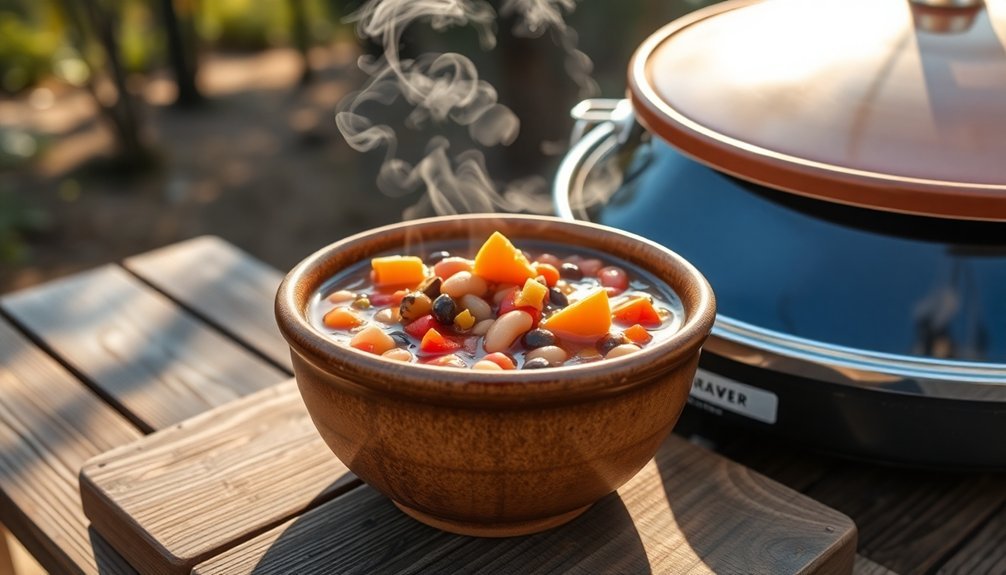
You'll want to position your solar cooker in direct sunlight before layering your three-bean mixture of black, pinto, and garbanzo beans with diced tomatoes and aromatic vegetables.
For maximum flavor, combine garam masala, cumin, and smoked paprika with your vegetable broth, creating an aromatic base that'll infuse the beans as they slowly cook.
The lengthy solar cooking process transforms these simple ingredients into a hearty, protein-rich stew that's perfect for off-grid survival.
Prep Your Solar Cooker
Before diving into the Three Bean Solar Stew recipe, your solar cooker needs proper setup to guarantee ideal cooking conditions.
Position your cooker in a spot where there's enough sunlight to cast a clear shadow on the ground. You'll want to use a dark-colored pot, as it absorbs sunlight more effectively and maintains consistent cooking temperatures.
Make sure you're cooking outdoors, where your solar cooker can perform at its best.
Since solar cooking times vary based on sunlight intensity, you'll need to be flexible with the 20-45 minute cooking window.
Keep the reserved tomato liquid nearby to adjust the stew's consistency as needed.
While you won't need fuel or ventilation, it's smart to have backup cooking methods ready in case weather conditions change unexpectedly.
Quick Bean Layer Method
Ready to layer your Three Bean Solar Stew? Start by placing your pre-sautéed aromatics (onions, garlic, and carrots) at the bottom of your solar cooker.
Add your chopped Brussels sprouts and reconstituted sun-dried tomatoes next, followed by the frozen corn. Pour in your three types of beans with their juices, and add extra liquid if needed.
- Bottom Layer: Your aromatics create a flavorful base that infuses the entire dish
- Middle Layer: Vegetables provide essential nutrients and texture variety
- Top Layer: Beans offer protein and their liquid helps create the stew consistency
- Liquid Level: Keep enough liquid to prevent drying while cooking
Cover your solar cooker tightly and let it simmer for 20-45 minutes, adjusting seasonings before serving.
You'll know it's ready when the vegetables are tender and the flavors have melded together.
Essential Spice Combinations
Creating the perfect flavor profile for Three Bean Solar Stew depends on strategically combining spices from four essential categories. You'll need to balance base aromatics, herbal blends, spicy elements, and rich components to achieve a complex, satisfying flavor without using fire.
| Base Aromatics | Herbal Blends | Heat & Richness |
|---|---|---|
| Onions | Bay Leaves | Chili Powder |
| Garlic | Italian Seasoning | Smoked Paprika |
| Carrots | Thyme | Red Pepper Flakes |
| Celery | Parsley | Black Pepper |
| Sun-dried Tomatoes | Green Goddess | Cocoa Powder |
Start by layering your aromatics, then add herbs for depth. You'll want to carefully measure spicy elements – start with less, as you can't remove heat once it's added. Finally, incorporate rich elements like cocoa powder and tomato paste to create a robust, satisfying base that'll develop as it slow-cooks in your solar setup.
Rainbow Legume Energy Bowl
Vibrant layers of grains, legumes, and vegetables come together in the Rainbow Legume Energy Bowl, a protein-packed survival meal that's both nutritious and satisfying.
You'll start with a base of quinoa, brown rice, or farro, then layer it with your choice of protein-rich legumes like chickpeas, black beans, or lentils.
- Choose your grain base wisely – quinoa offers complete protein, while brown rice provides sustained energy.
- Mix and match legumes for varied nutrients – combine chickpeas with black beans for maximum protein.
- Add colorful vegetables like kale, red cabbage, and carrots for essential vitamins.
- Top with nutrient-dense additions like avocado, pumpkin seeds, and tahini sauce.
This versatile bowl keeps well in airtight containers, making it perfect for off-grid meal prep and long-term survival situations.
Mediterranean Chickpea Solar Soup
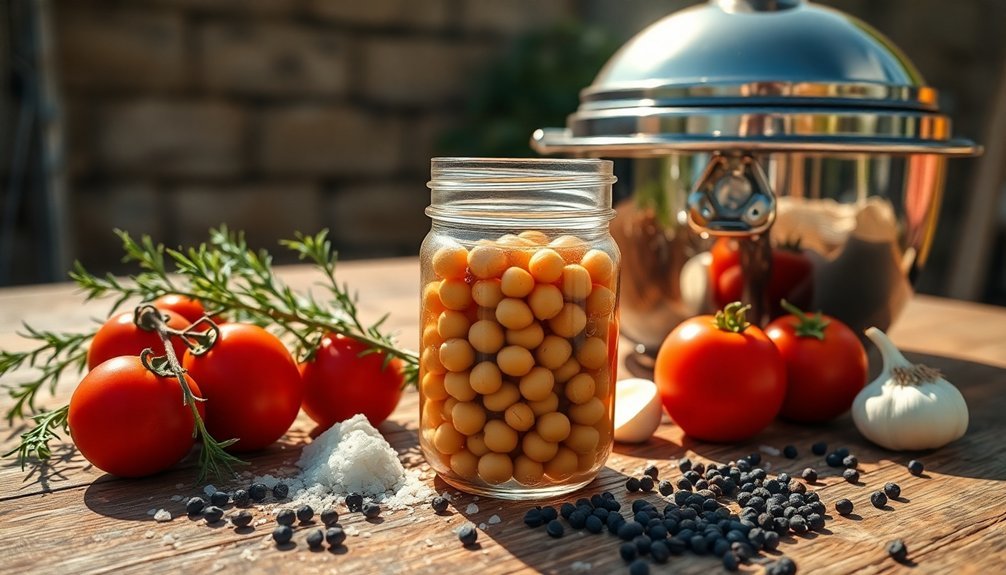
Building on the same principles of nutrient-dense ingredients, the Mediterranean Chickpea Solar Soup offers a warming and sustainable meal option for off-grid living.
You'll need essential staples like chickpeas, tomatoes, and vegetable broth, combined with aromatic vegetables including onions, carrots, and celery.
This solar-powered adaptation doesn't require traditional stovetop heating. Instead, place your ingredients in a dark-colored pot within your solar oven, allowing the sun's energy to slowly simmer the mixture.
You can enhance the soup's flavors with Mediterranean spices like cumin, coriander, and turmeric. For added nutrition, toss in spinach or sweet potatoes.
The soup's protein-rich chickpeas and variety of vegetables create a complete meal that'll keep you energized during extended periods off the grid.
Sunbaked Rice and Beans
While rice and beans might seem like a basic combination, this sunbaked version transforms these humble ingredients into a hearty off-grid survival soup.
You'll need 1 cup of rice, 1/4 cup of kidney beans, and optional additions like pearl barley or chickpeas. Store your ingredients separately in airtight containers with oxygen absorbers to maintain freshness.
To create your solar-powered meal:
- Layer your pre-soaked ingredients in an insulated container or mason jar
- Place your container in direct sunlight for several hours
- Use thermal mass materials like stones to maintain heat
- Let the ingredients slowly cook until tender
This nutrient-rich combination provides roughly 2,000 daily calories and forms a complete protein source.
You can enhance flavor with bouillon, bay leaves, or your preferred seasonings while maintaining the soup's off-grid cooking simplicity.
High Protein Solar Bowl
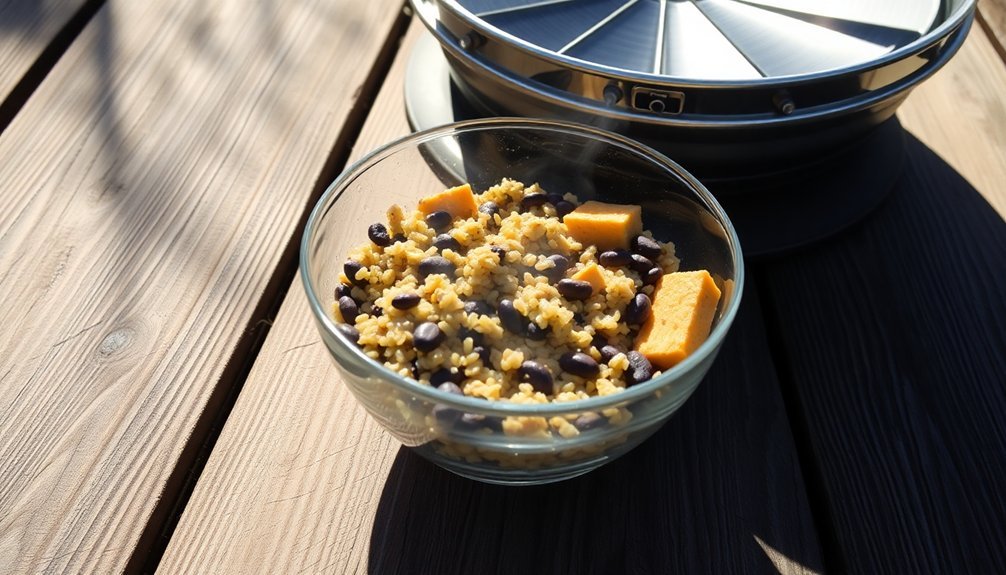
For survivalists seeking maximum nutrition, the High Protein Solar Bowl packs a powerful punch with minimal energy requirements. You'll combine protein-rich quinoa, chickpeas, and hemp hearts with a creamy tahini-yogurt whip to create a sustaining meal that doesn't require traditional cooking methods.
| Ingredient | Protein (g) | Why It Matters |
|---|---|---|
| Quinoa | 8g | Energy-sustaining grain |
| Chickpeas | 10g | Long-lasting legume |
| Hemp Hearts | 6g | Brain-boosting seeds |
| Tahini-Yogurt | 5g | Gut-healthy probiotics |
| Optional Eggs | 14g | Complete protein source |
Using your solar oven, you can cook the quinoa and chickpeas simultaneously, then store them for quick assembly later. Top your bowl with fresh greens, za'atar-spiced hemp hearts, and a dollop of tahini-yogurt whip for a complete meal delivering up to 32g of survival-ready protein.
Frequently Asked Questions
How Long Can Survival Soups Stay Fresh in Mason Jars?
Your dehydrated soup mixes can last up to 5 years in sealed Mason jars with oxygen absorbers, while home-canned soups stay fresh for at least 1 year. You'll get best results storing them in cool, dry places.
Can These Soups Be Prepared During Cloudy or Rainy Weather?
Yes, you can prepare soups during cloudy or rainy weather using chemical heating packs, insulated containers, or ready-to-eat options. You'll find cold soup recipes and pre-cooked meals are also effective alternatives to traditional cooking.
What Alternatives Exist if Oxygen Absorbers Aren't Available?
You can use vacuum sealing, desiccants, or silica gel packets instead of oxygen absorbers. Storing ingredients in airtight containers with bay leaves or sealing them with melted wax also works effectively.
Do Beans Become Toxic if Solar-Cooked at Low Temperatures?
Yes, you'll risk severe food poisoning if your beans don't reach 100°C (212°F) during solar cooking. Lower temperatures around 80°C (176°F) can actually make beans five times more toxic than raw ones.
Can Survival Soups Be Safely Reheated Multiple Times in Solar Ovens?
You shouldn't reheat soups multiple times in solar ovens, as inconsistent temperatures can promote bacterial growth. If you can't maintain 165°F consistently, it's safer to cook only what you'll eat immediately.
In Summary
You've now got seven hearty, fire-free soup options that'll keep you nourished during off-grid situations. Whether you're using a solar oven, thermal cooker, or passive heat methods, these protein-packed recipes don't require traditional cooking methods. By stocking up on beans, lentils, and rice, you'll always be prepared to make these filling meals. Remember to rotate your stored ingredients every six months to maintain freshness.


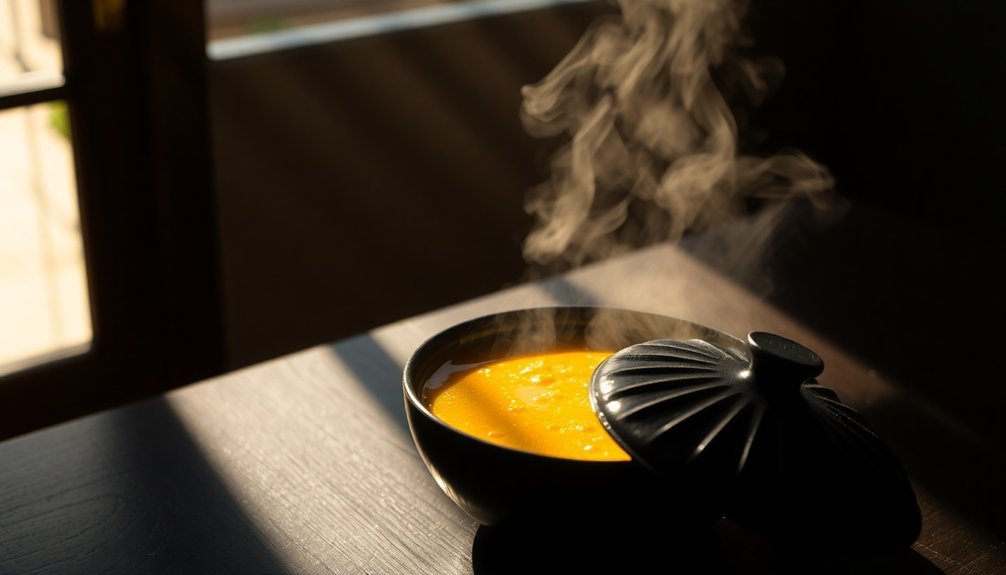
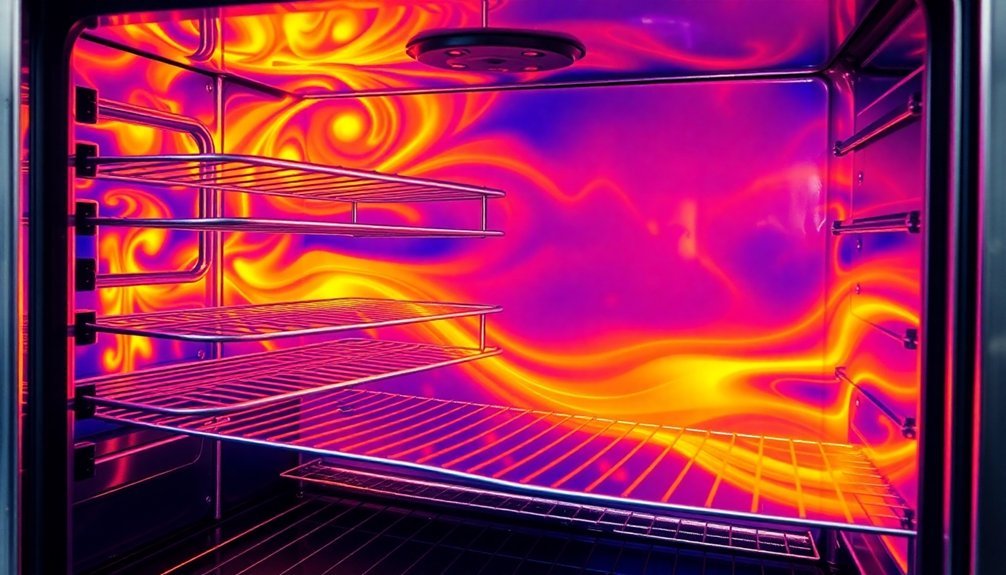
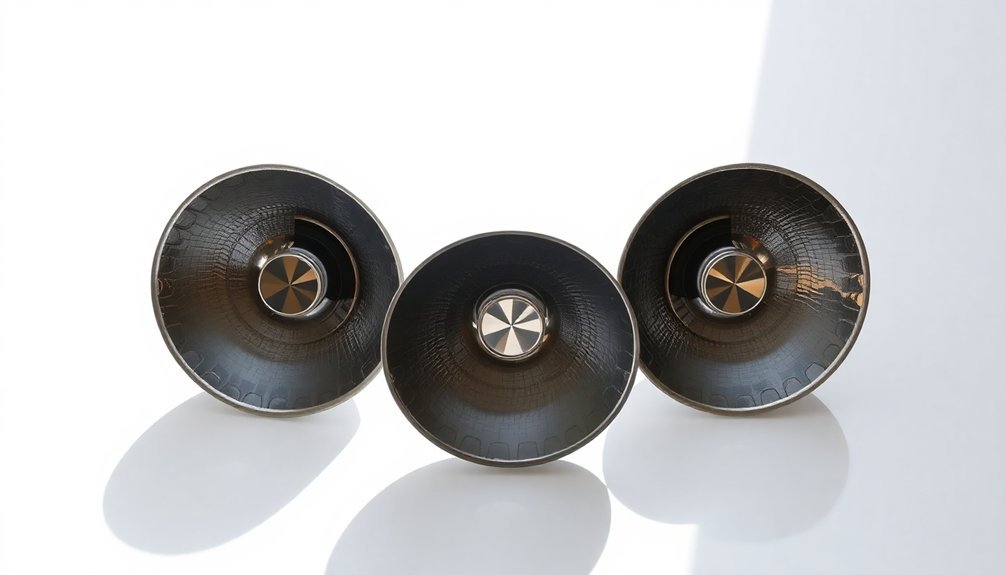
Leave a Reply